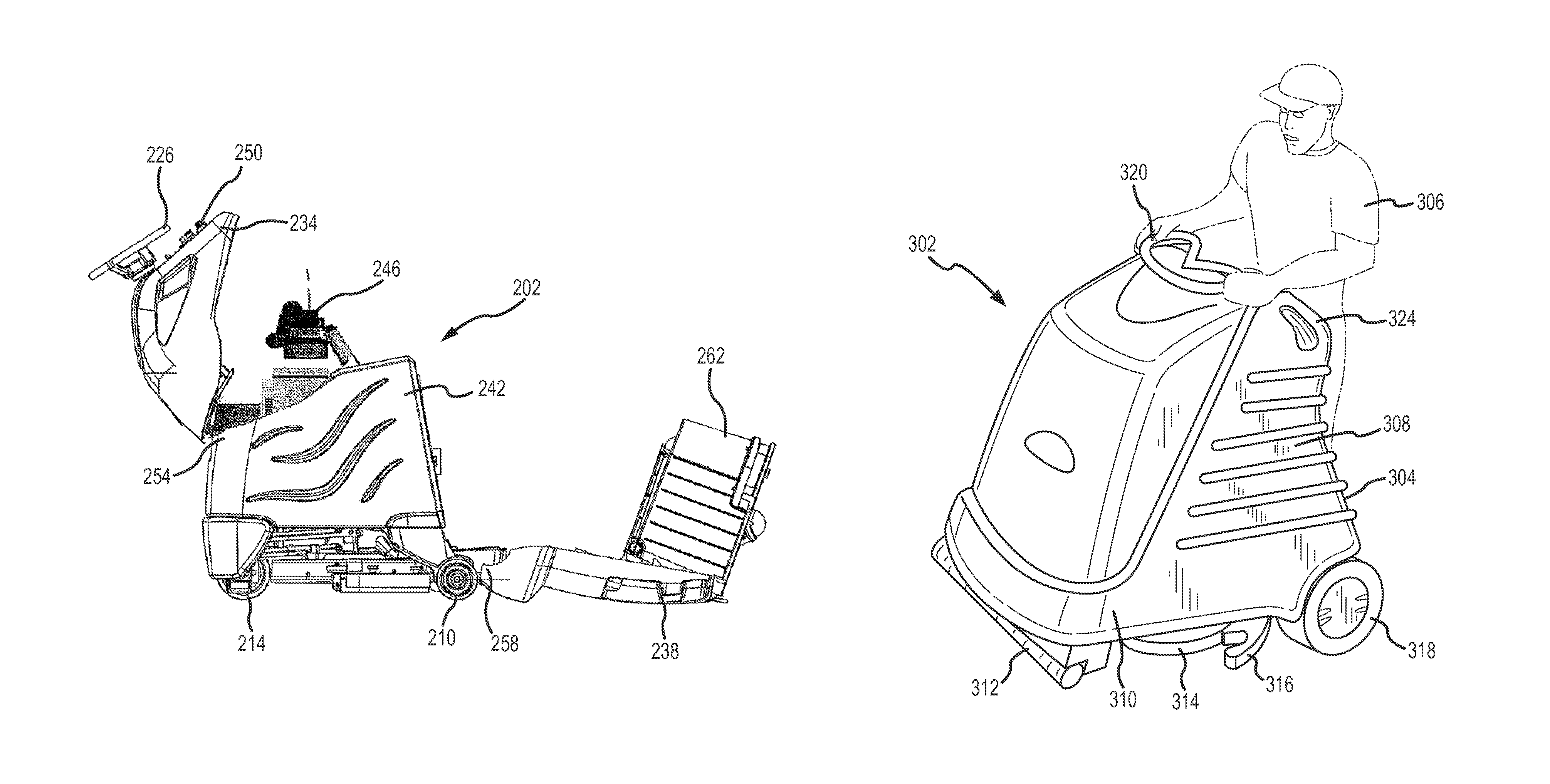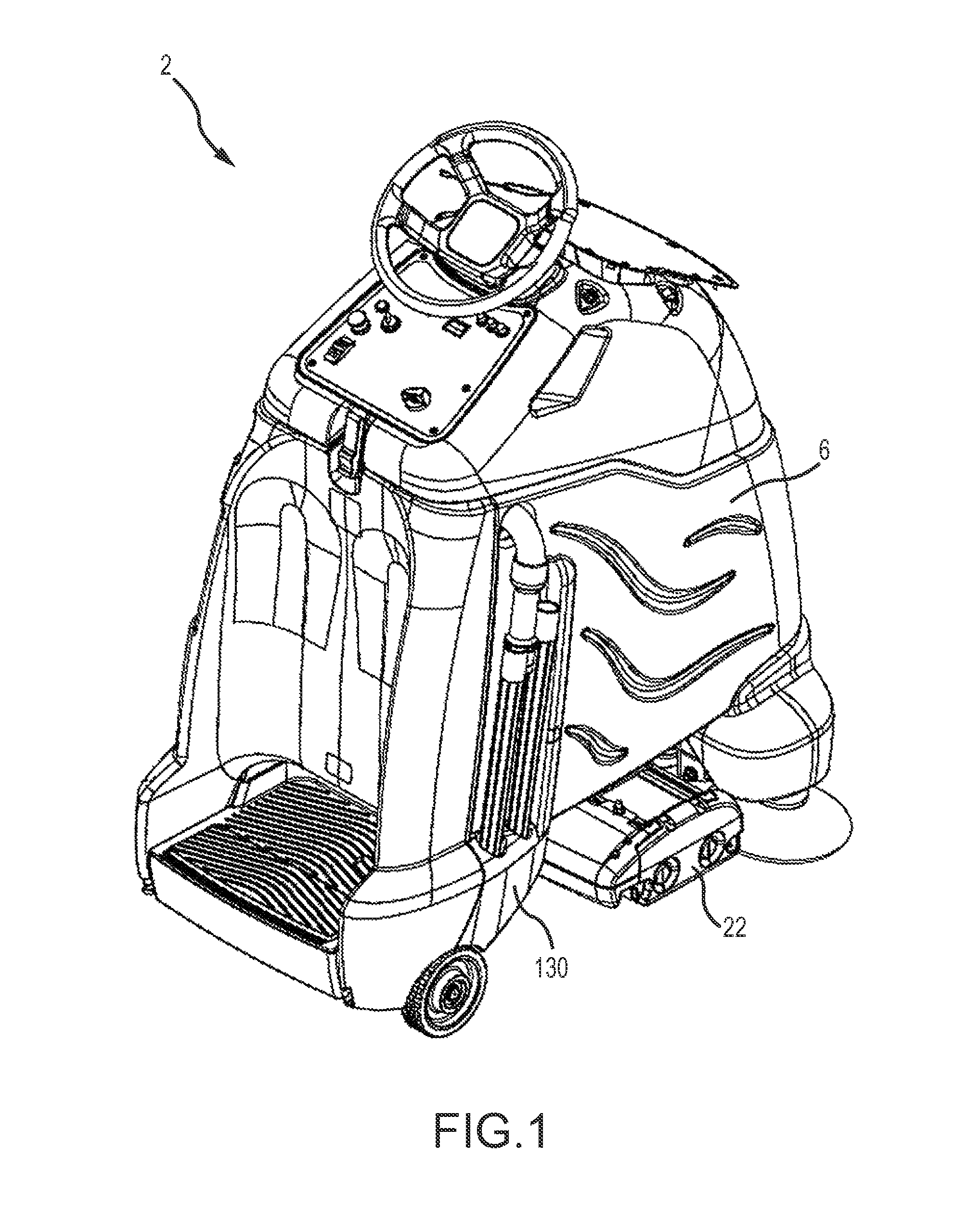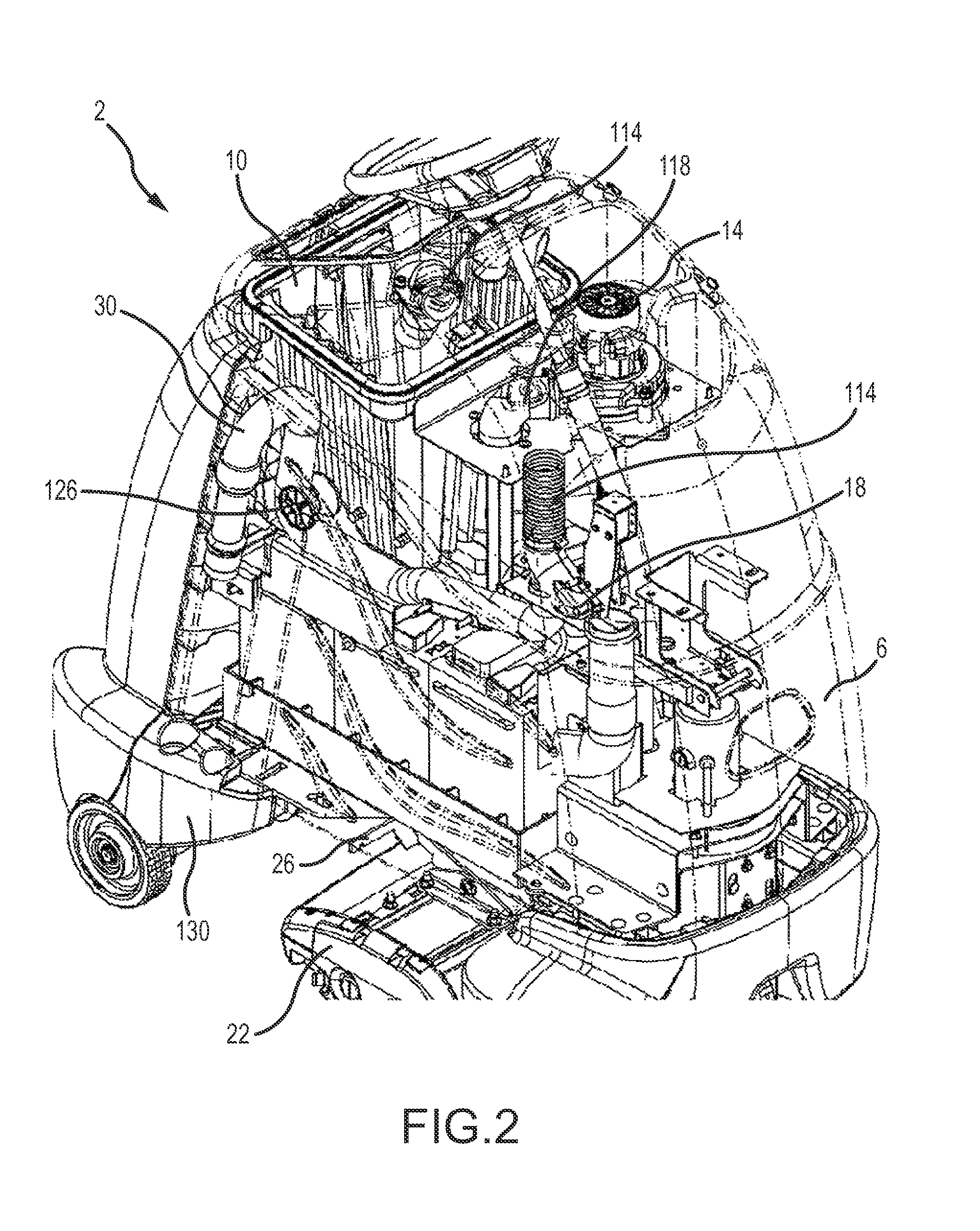Floor cleaning apparatus
a technology for cleaning equipment and floors, applied in the direction of carpet cleaners, floor surfacing/polishing machines, cleaning machines, etc., can solve the problems of soiled mop and fluid in the bucket becoming contaminated by germs and/or bacteria, affecting the cleaning effect, etc., to achieve the effect of convenient use, increased maneuverability, and easy maneuverability
- Summary
- Abstract
- Description
- Claims
- Application Information
AI Technical Summary
Benefits of technology
Problems solved by technology
Method used
Image
Examples
Embodiment Construction
[0106]FIGS. 1-3 show a floor treatment apparatus 2 (“apparatus”) of one embodiment of the present invention that employs a housing 6 that covers a vacuum bag 10, a vacuum motor 14, a valve 18, and other components generally found in floor treatment apparatus. The apparatus 2 employs a cleaning assembly 22 attached to the housing 6 via a spring to an armature 26, which will be further described below. In operation, dirt, debris, and residue are agitated by the cleaning assembly 22 and suctioned into the vacuum bag 10. In a second mode of operation, a hand-held accessory hose 30 is used to suction debris in hard-to-reach places. The debris suctioned through the accessory hose 30 is also directed to the vacuum bag 10 by the vacuum motor 14.
[0107]Referring now to FIGS. 4-7, the cleaning assembly 22 employed by some embodiments of the present invention is shown that includes a front brush 34 and a rear brush 38. The front brush 34 and rear brush 38 may comprise a single, cylindrical brus...
PUM
 Login to View More
Login to View More Abstract
Description
Claims
Application Information
 Login to View More
Login to View More - R&D
- Intellectual Property
- Life Sciences
- Materials
- Tech Scout
- Unparalleled Data Quality
- Higher Quality Content
- 60% Fewer Hallucinations
Browse by: Latest US Patents, China's latest patents, Technical Efficacy Thesaurus, Application Domain, Technology Topic, Popular Technical Reports.
© 2025 PatSnap. All rights reserved.Legal|Privacy policy|Modern Slavery Act Transparency Statement|Sitemap|About US| Contact US: help@patsnap.com



